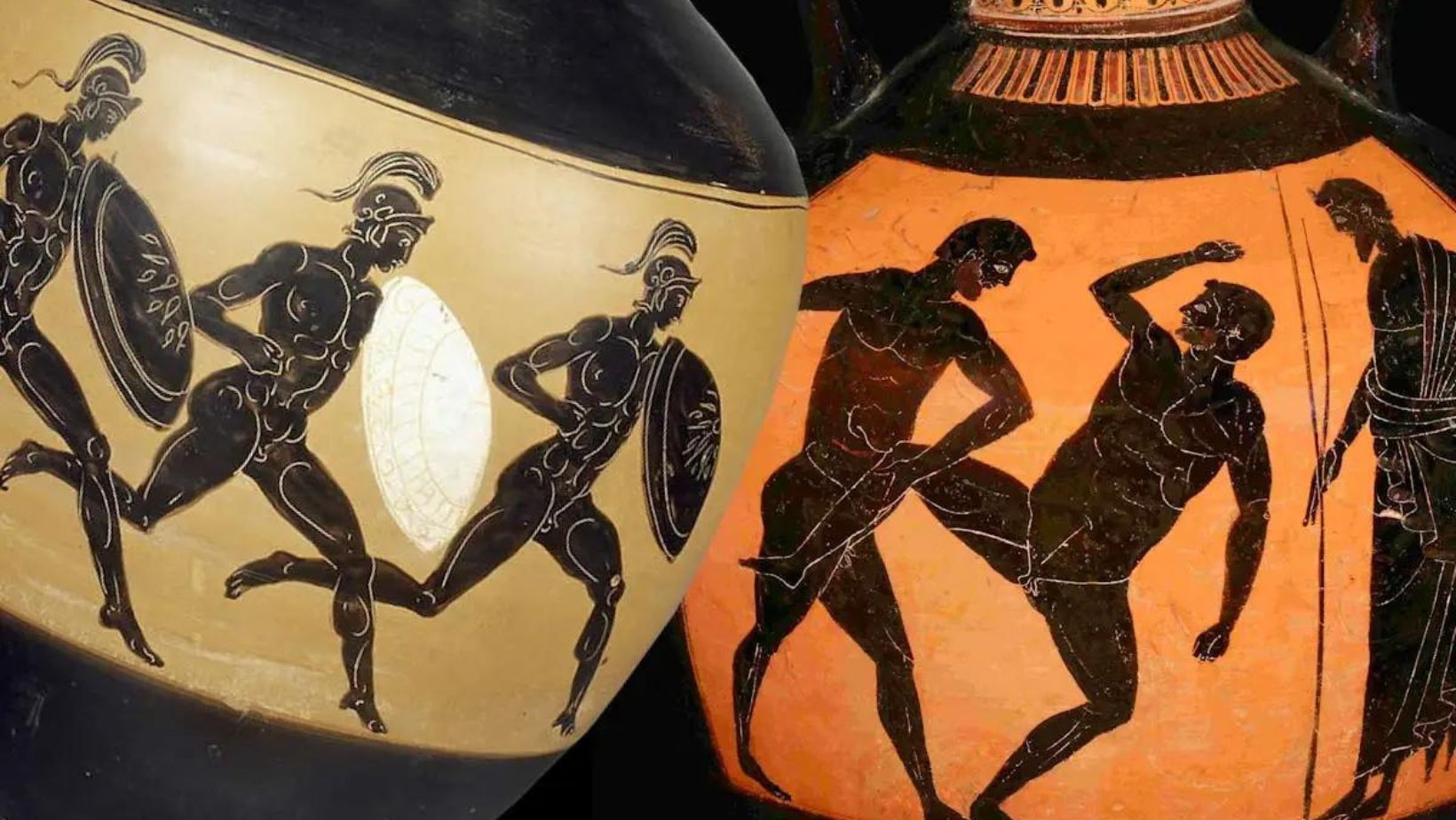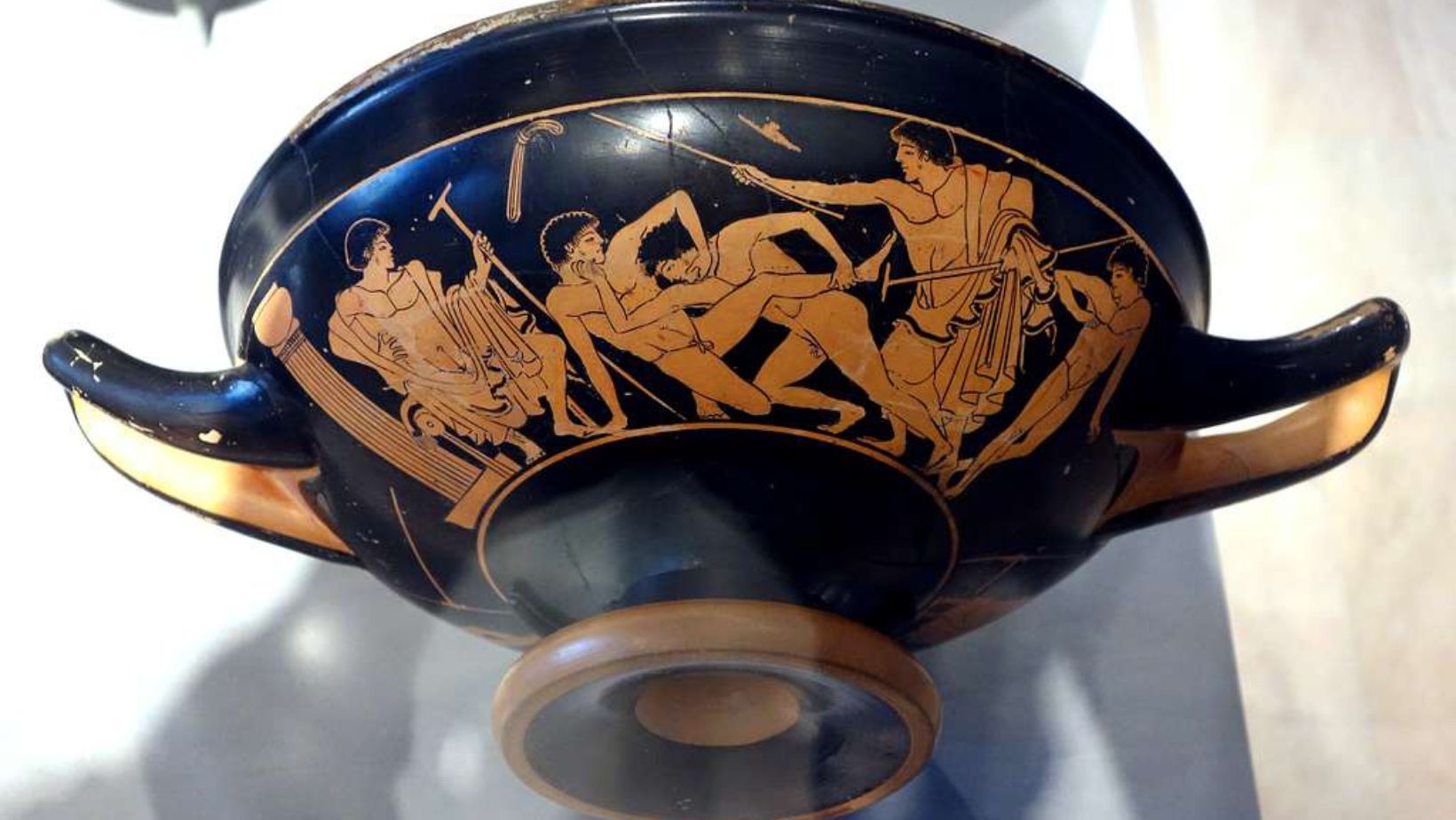Have you ever wondered about the relics left behind by athletes of yesteryears? The Ancient Olympic Games Artifacts, a beacon of competition and unity among ancient city-states, have gifted us with numerous artifacts that tell tales more vivid than words could describe. These old relics, dating back hundreds of years, don’t just show off the athletic skills from long ago but also give us a peek into what life and culture were like in Ancient Greece. As we peel back layers of history to explore these treasures, each artifact stands as a testament to human endeavor across time.
Table of Contents:
- Ancient Olympic Games Artifacts Discovered
- The Significance of Ancient Olympic Artifacts
- Notable Artifacts from the Ancient Olympics
- Exploring the Treasures of Olympia
- Conclusion
Ancient Olympic Games Artifacts Discovered: Ancient Olympic Games Artifacts

The ancient Olympic Games were a big deal. They attracted athletes from all over the Greek world to compete in honor of Zeus.
And now, we’re discovering incredible artifacts that give us a glimpse into this fascinating part of history. From statues and figurines to pottery and inscriptions, these relics shed light on the ancient Olympics like never before.
Statues and Figurines
Imagine being able to see the faces of ancient Olympic victors. Well, thanks to bronze statuettes and other sculptures, we can. These artifacts depict athletes in action, preserving their legacy for thousands of years.
It’s amazing to think that a small figurine can capture a moment in time from so long ago. But that’s exactly what these statues do – they bring the ancient games to life in incredible detail.
Pottery and Ceramics: Ancient Olympic Games Artifacts
But the ancient Olympics’ story is not just told by statues. Pottery and ceramics also play a big role.
These artifacts often feature intricate designs and scenes from the games. We’re talking chariots racing, wrestlers grappling, and discus throwers in action. It’s like a snapshot of ancient Greek culture right there on a vase or cup.
Inscriptions and Tablets
And let’s not forget about the power of the written word. Inscriptions and tablets from the ancient Olympics provide a wealth of knowledge about the games and the athletes who competed.
Victory lists, dedications to the gods, and even poems celebrating the champions – these written artifacts give us an inside look at the importance of the Olympics in ancient Greek society.
The Significance of Ancient Olympic Artifacts: Ancient Olympic Games Artifacts
So why do these ancient Olympic artifacts matter? Well, for starters, they give us incredible insights into ancient Greek culture.
Through these objects, we can see what the Greeks valued – athletic prowess, religious devotion, and celebrating the human form.
These artifacts also help us understand the importance of the games in ancient Greek society. The Olympics weren’t just a sporting event – they were a cultural phenomenon that brought people together from all over the Greek world.
The Olympics played a central role in ancient Greek life.
Understanding the Importance of the Games
But perhaps most importantly, these artifacts help us preserve the legacy of the ancient Olympics. Through them, we can keep the spirit of the games alive and appreciate the incredible feats of the athletes who competed.
Isn’t it amazing that, even after thousands of years, we’re still in awe of what the ancient Olympians managed to accomplish? And it’s all thanks to the artifacts they left behind.
Preserving the Legacy of the Olympics: Ancient Olympic Games Artifacts
So the next time you see a statue of a discus thrower or a vase depicting a chariot race, take a moment to appreciate the history behind it. These artifacts are more than just objects – they connect to a fascinating past that continues to inspire us today.
As we continue to discover more about the ancient Olympics, one thing is clear—the games may have changed over time, but their spirit remains as strong as ever.
Notable Artifacts from the Ancient Olympics: Ancient Olympic Games Artifacts
Regarding ancient Olympic artifacts, some real standouts have captured the imagination of historians and fans alike. These objects give us a tangible connection to the games and the athletes who competed in them.
One of the most famous artifacts from the ancient Olympics is the Discus Thrower statue. Check out this stunning piece of art, which captures an athlete in the heat of a discus throw, his whole body caught up in the spin.
The truly breathtaking part about this statue lies in its intricate details and how lifelike it feels. You can see the muscles straining and the concentration on the athlete’s face—it’s a snapshot of a moment frozen in time.
The Discus Thrower is a testament to the skill of ancient Greek sculptors and the importance of athletics in their culture. No wonder this statue has become an iconic symbol of the Olympics.
The Boxer of Quirinal
What’s incredible about this statue is the sense of exhaustion and vulnerability it conveys. The fighter’s got that worn-out look, with his face all puffed up from taking hit after hit.
It’s a powerful reminder of the brutality of ancient boxing and the toll it took on the athletes who competed. But it also shows their bravery and dedication to their sport.
The Victorious Youth bronze statue is another masterpiece from the ancient Olympics. This life-size figure depicts a young athlete crowning himself with an olive wreath – a symbol of victory in the games.
The statue is remarkable for its naturalism and attention to detail.
Yet, what truly makes the Victorious Youth stand out is how it beams with a sense of achievement and pride. This athlete has triumphed on the biggest stage in the Greek world, and he knows it.
The Pankration Scene on a Drinking Cup: Ancient Olympic Games Artifacts

Finally, we have to mention the Pankration Scene on a drinking cup. This incredible piece of pottery depicts two athletes engaged in the brutal sport of pankration, a combination of wrestling and boxing with few rules.
The level of detail on this cup is astounding. You can see the strain on the athletes’ faces and the tautness of their muscles as they grapple with each other.
This really drives home the point about how wild and risky those old Olympic games were.
These artifacts give us an incredible window into the world of the ancient Olympics. They help us feel connected to the athletes and immerse us in the culture that cheers them on. Now, that’s a heritage we should all be eager to keep alive.
Exploring the Treasures of Olympia: Ancient Olympic Games Artifacts
When it comes to the ancient Olympics, there’s no place more important than Olympia. This sacred site in Greece was the home of the games for centuries, and it’s still a treasure trove of artifacts and monuments.
One of Olympia’s most impressive structures is the Temple of Zeus. This massive temple, built in the 5th century BC, was one of the largest in the Greek world.
The temple housed a giant statue of Zeus, which was one of the Seven Wonders of the Ancient World.
It’s amazing to think of the athletes and spectators who would have passed by this temple on their way to the games. I bet that view was absolutely breathtaking.
The Statue of Nike: Ancient Olympic Games Artifacts
Another incredible artifact from Olympia is the Statue of Nike. This bronze statue depicts the goddess of victory, and it was created to commemorate the Greek triumph over the Persians in the early 5th century BC.
The statue is remarkable for its sense of movement and energy. Nike seems to be alighting on the ground; her wings still spread behind her.
This vividly reminds us of the resilience and grit that run deep in Greek culture, showcasing their unwavering will to leap over any hurdle. And it’s just one of the many treasures that Olympia has to offer.
Speaking of treasures, Olympia was also home to several treasuries—small buildings that housed offerings and dedications from the various city-states that participated in the games.
Gold and silver statues, along with beautifully detailed reliefs, really show off the riches and craftsmanship that thrived in ancient Greece.
Today, the treasuries are mostly in ruins, but they still give us a glimpse into the opulence and beauty of ancient Olympia.
The Pelopion
Finally, we must mention the Pelopion – a sacred precinct dedicated to the hero Pelops, who was said to have founded the Olympic Games.
The Pelopion was a key part of the Olympic site, and it was home to several important rituals and ceremonies.
Today, the Pelopion is a quiet, peaceful spot—a far cry from the bustling excitement of the ancient games. But it’s still a powerful reminder of Olympia’s history and significance.
Exploring Olympia’s treasures is like taking a step back in time. Through these artifacts and monuments, we can connect with the athletes, gods, and culture that made the Olympics a vital part of the ancient world.
And as we continue to uncover more about this incredible site, one thing is clear – Olympia will always be a source of wonder and inspiration for those who love the Olympic Games.
Key Takeaway: Ancient Olympic Games Artifacts
Dive into the world of ancient Olympic artifacts and see how statues, pottery, and inscriptions bring to life the games’ spirit. These pieces not only showcase Greek culture but also underline the Olympics’ importance in society, preserving a legacy that still inspires us today.
Conclusion: Ancient Olympic Games Artifacts
In our journey through time, exploring Ancient Olympic Games artifacts, we’ve uncovered stories etched in bronze and marble – narratives that echo the triumphs and trials faced by those who competed under Zeus’s watchful gaze. Each piece holds within it a story waiting to be told; whether it’s a discus used in competitions or an olive wreath crown bestowed upon victors, they all serve as bridges connecting us to our shared human heritage. So here we stand, at the intersection where past meets present, reminded once again how sports can transcend boundaries – proving that some things are truly timeless.

